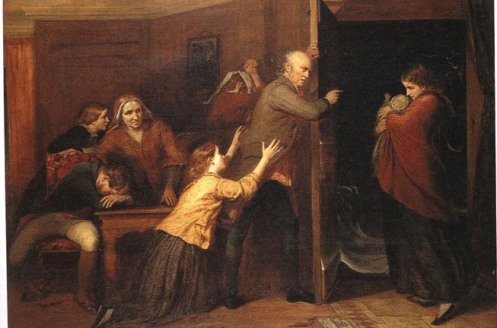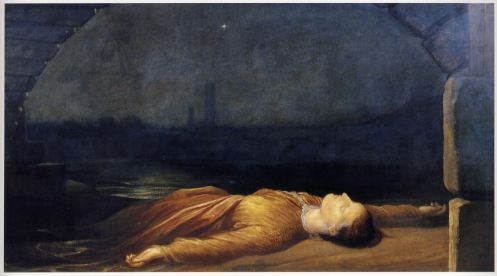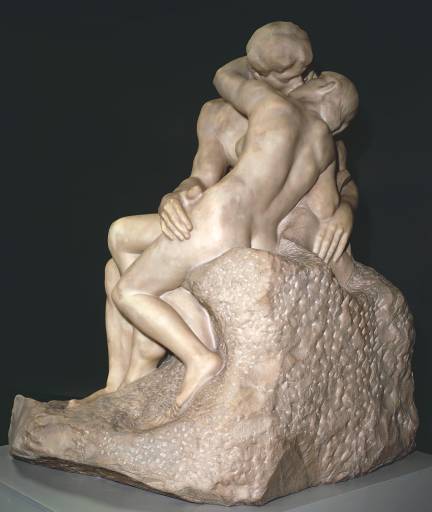The Rescued Woman
To rescue means to free or deliver from confinement, violence, danger, or evil. But what if being rescued from one evil only traps you in another? When reading the poem, “The Ruined Maid,” and exploring modern media I focused on women, and their lives after rescue. I also concentrated on who they were before, and why they needed to be rescued in the first place. On the surface of each piece I analyzed, the rescue seemed to strongly improve the woman’s life. However, while these women were given a better life away from danger, their rescue came at a price. To be rescued doesn’t always fit the societal definition. Being saved doesn’t always mean you will be safe.
“The Ruined Maid” by Thomas Hardy explores the rescue of one woman and the ruined life she is forced to lead, in order to ensure a better life. The woman in the poem, Melia, is given a more prosperous life, at the price of her reputation and free will. On the outside Melia has gained fair garments, elegant jewels, and a life fit for the high social class, though underneath she is ruined. In the 19th century the word ruined referred to prostitution and the act of selling your body for sex. Though this form of work was looked down upon, many women did it to escape a previous life or gain a sense of independence. This poem’s story is no different. While preforming a close reading I found that Melia was rescued from a life of manual labor on the farm, a life she so desperately wanted to leave. Turing to prostitution was her only way out. However, rescued from her previous life, the underlying message of the poem emphasizes her wishes to become the pure and respectable girl she once was. When running into a farmhand from her old life, Melia starts to realize that beautiful possessions will never give her the same satisfaction as a life free from the tainted waters she so desperately ran to drink. In the poem the author uses repetition in each stanza to highlight this message. The recurrence of the word ruined or ruin in each of Melia’s lines adds additional meaning. Referring back to her current state as a ruined woman (time and time again), Melia wants the farm hand to realize that even with the gain of fair garments and prosperity, Melia will always hold the title of a ruined woman, a title she can never shed. Even though she was rescued from a life she didn’t want, the life she now lives comes at a price she will never stop paying. This way of living became the life of many rural and poor women during this period. Given the promises of a better life, these women wanted to be rescued. Many of Melia’s lines in the poem refer to the word “we,” meaning that she is part of a group or collection of women that have been stripped of their reputations and their previous lives. The reference to the word “we” throughout the poem puts an added emphasis on how easily enticed women can be and their willingness to be rescued. They weren’t searching for a way out, just an escape from one poor situation to another. Melia, like many women, was so eager to be rescued that she didn’t stop to examine the consequences. Rescue doesn’t always mean freedom.
The author also uses diction to convey the message that the price you pay for rescue isn’t always worth the life you receive. In the third stanza, Melia’s acquaintance discusses the difference in the way Melia used to speak and the way she talks now. At home on the barton (farm) Melia used to talk like all the other farmhands and used rural alternatives to many words. For example, instead of using the word “you” Melia would say “thee” or “thou”. In contrast the farmhand states that the way Melia presently speaks is fit for high social class. However, at the first sign of admiration from the farmhand regarding this new life, Melia refers back to her old language and uses the word “ain’t”. The slip up is not mistake, but a way to expresses her desires of returning to her old life, and stripping herself of this awful title. Melia does not wish for the farmhand to become ruined and lose the opportunity to have a family and a respectable life. If Melia had known the price she would have to pay for a better life, her willingness for rescue wouldn’t have been so strong. She wouldn’t wish the life she has received on anyone. Being a ruined woman may come with certain benefits, but it also comes with an unbearable reputation.
The style in which the poem is written also helps to identify some of the underlying feelings that Melia is struggling to contain. In the fifth stanza the author uses alliteration to put emphasis on two sets of words. “sigh” and “sock” along with “megrims” or “melancho-ly.” By using alliteration the reader can infer that these words have a deeper meaning and are part of an essential message. When Melia was a farmhand, she used to complain and sulk, believing that a life in tatters was not for her. Now in her present state, the farm hand says that Melia seems to show nothing of sorrow or depression. The key word in this phrase is seems. Even though Melia is putting on a strong front, she still feels a sense of unhappiness and sadness, maybe even more so than she did on the farm. She thought she was getting away from the misery only to feel even more despair in her current life. Lacking a free life to go alongside her prosperity makes her feel even more trapped than she once was. Being rescued from her once melancholy life didn’t diminish the amount of sadness she once thought it would. The elegant life Melia lives today will never be worth all she had to give up. A family and a respectable life is worth much more than a handful of beautiful belongings.
Everything comes at a price and rescue is no different. Modern Media has only strengthened the argument that the willingness of women to be rescued from their past, overpowers their ability to recognize any consequences they may later face. In the TV show Nakita, airing on the CW, the rescue of powerless women is at the forefront of almost every episode. Nakita, the main character, is much like Melia, in that she wants to escape her past life. Nakita comes from an abusive home and needs to find a way out.  Instead of turning to prostitution, like Melia, she is rescued by a government black ops program called Division, where she is trained to be an assassin. In the very first episode Nakita’s past life is examined in order to show the audience where she came from and why she chose the path she did. Much like Melia, she felt she had no choice but to get out, no matter what she had to go through to get there. The price for Nakita’s rescue was something she wasn’t prepared to deal with. She was under constant control, and faced more brutal punishments than ever before. On the outside, however, similar to Melia, Nakita was given beautiful clothes, a large amount of money, a nice place to live, and access to anything or anywhere she wanted to go. It is easy to see that the gain of such possessions made Nakita, like many women, blind to everything she was giving up. A strict rule when working for Division is that any outside relationships is forbidden. Unlike Melia who couldn’t have a family due to her reputation, Nakita was ordered to refrain from any contact with outsiders, and those who could pose a threat to Division and Nakita’s cover as a government assassin. These constant orders, on top of her job to forcefully kill, Nakita began to feel her punishment for so readily joining Division and agreeing to be rescued from her old life. She was brutally attacked almost every day, whether it was during her training or out in the field, she lacked relationships, and she risked her life during each mission for a company she didn’t even want to be a part of.
Instead of turning to prostitution, like Melia, she is rescued by a government black ops program called Division, where she is trained to be an assassin. In the very first episode Nakita’s past life is examined in order to show the audience where she came from and why she chose the path she did. Much like Melia, she felt she had no choice but to get out, no matter what she had to go through to get there. The price for Nakita’s rescue was something she wasn’t prepared to deal with. She was under constant control, and faced more brutal punishments than ever before. On the outside, however, similar to Melia, Nakita was given beautiful clothes, a large amount of money, a nice place to live, and access to anything or anywhere she wanted to go. It is easy to see that the gain of such possessions made Nakita, like many women, blind to everything she was giving up. A strict rule when working for Division is that any outside relationships is forbidden. Unlike Melia who couldn’t have a family due to her reputation, Nakita was ordered to refrain from any contact with outsiders, and those who could pose a threat to Division and Nakita’s cover as a government assassin. These constant orders, on top of her job to forcefully kill, Nakita began to feel her punishment for so readily joining Division and agreeing to be rescued from her old life. She was brutally attacked almost every day, whether it was during her training or out in the field, she lacked relationships, and she risked her life during each mission for a company she didn’t even want to be a part of.  Another similarity between Nikita and Melia was their deep desire to return to the normalcy of their old life. Neither wanted to back to their past situations, but both wanted a sense of a normal life once again. Even though prostitution or in Nikita’s case assassination had become their day to day lives, it was far from normal. Also, each woman wouldn’t wish their form of rescue on anyone. Nikita tries to save any new recruit Division brings in for training; much like Melia tries to save the farmhand from envying the life of a ruined woman. Whether it be prostitution or assassination, neither are worth the price that that these women had to pay. One of the main differences between Nikita and Melia, however, is that Nikita escapes her rescued life and is fixated on bringing down Division and her rescuers. This difference is part of the major transformation women have gone through when being portrayed in modern media. Many current shows and movies depict the women as being strong and independent rather than reliant on a man for support. Unlike Melia, Nikita has the strength and the resources to leave her captures and make a better life for herself. Many women in the 19th century had very little options and didn’t have the strength or ability to defy their men or their employers. As women’s rights became stronger so did their portrayal in the media. Nikita is a bad ass woman with more strength than any of the men that trained her. Though the message is the same and women still rely on men to be rescued, the endings are different. Women aren’t trapped anymore and Nikita proves that with intelligence and motivation any women can escape. Looking back at her old life Nikita wishes she would have had the strength of leaving her abusive home on her own instead of relying on someone else to get her out. Being rescued from one life only left her trapped in another, one she never wanted. Being weak and desperate led Nikita to a life much worse than she could have ever imagined, and made her an easy target for rescue.
Another similarity between Nikita and Melia was their deep desire to return to the normalcy of their old life. Neither wanted to back to their past situations, but both wanted a sense of a normal life once again. Even though prostitution or in Nikita’s case assassination had become their day to day lives, it was far from normal. Also, each woman wouldn’t wish their form of rescue on anyone. Nikita tries to save any new recruit Division brings in for training; much like Melia tries to save the farmhand from envying the life of a ruined woman. Whether it be prostitution or assassination, neither are worth the price that that these women had to pay. One of the main differences between Nikita and Melia, however, is that Nikita escapes her rescued life and is fixated on bringing down Division and her rescuers. This difference is part of the major transformation women have gone through when being portrayed in modern media. Many current shows and movies depict the women as being strong and independent rather than reliant on a man for support. Unlike Melia, Nikita has the strength and the resources to leave her captures and make a better life for herself. Many women in the 19th century had very little options and didn’t have the strength or ability to defy their men or their employers. As women’s rights became stronger so did their portrayal in the media. Nikita is a bad ass woman with more strength than any of the men that trained her. Though the message is the same and women still rely on men to be rescued, the endings are different. Women aren’t trapped anymore and Nikita proves that with intelligence and motivation any women can escape. Looking back at her old life Nikita wishes she would have had the strength of leaving her abusive home on her own instead of relying on someone else to get her out. Being rescued from one life only left her trapped in another, one she never wanted. Being weak and desperate led Nikita to a life much worse than she could have ever imagined, and made her an easy target for rescue.
In a sense rescue doesn’t mean to rescue at all but to capture and manipulate. Weak women get sucked into the promise of a better life, only to give up everything they have ever known to be right. At what point does the price become too much? With both Melia and Nikita, their lives were changed by rescue, but not for the better. From these two portrayals of rescued women it is easy to see that even the most enticing life, has its downfalls. I believe that the modern portrayal of women has changed, but the fact that desperate and weak women can so easily succumb to men is one thing I don’t think will ever change. The want to be rescued will always be more powerful than a woman’s want to fight for herself. Even with strong woman in the media today, women will always want to feel worthy of rescue, no matter what the consequences. Until woman start to realize they are valuable on their own, the desperate need to gain support from men will continue. Both Nikita and Melia realized this too late, long after they had paid the ultimate price, their freedom and reputation. No matter how lost or stuck one feels, they must rescue themselves in order to truly be free.
Katie Ramstad
(1) Hardy, Thomas. “The Ruined Maid.” Poems of the Past and Present. 2nd edition. London: Macmillan, 1903. Pg. 192-94. Web. <http://www.victorianweb.org/authors/hardy/poems/ruinedmaid.html> Nov. 2, 2012
(2) Craig Silverstein. “Nikita.” Television. CW TV. 2010.











